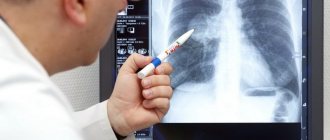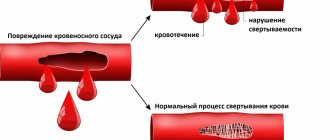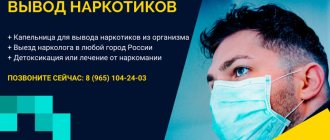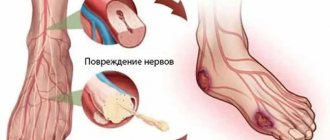Shereshevsky-Turner syndrome
(Turner syndrome, Ullrich syndrome) is a typical form of dysgenesis (underdevelopment) or primary agenesis (complete underdevelopment) of the female gonads - the ovaries, caused by genetic deformation and accompanied by short stature and a number of developmental anomalies of the body and some internal organs. The clinical picture of this syndrome was described in the 20s of the twentieth century by endocrinologist N.A. Shereshevsky. This syndrome develops only in females.
Shereshevsky-Turner syndrome is a chromosomal disorder
, which is characterized by either the complete absence of one chromosome or the presence of a defect in one of the X chromosomes. The karyotype of such women is 45 X0, or the mosaic type is 45 X/ 46 XX, 45 X/ 46 XY. According to medical statistics, Shereshevsky-Turner syndrome occurs in one case per 4000 live births of girls, despite the fact that 98-99% of pregnancies with fetal karyotype 45 X0 result in spontaneous abortions in the early stages, therefore this pathology is classified as one of the most common chromosomal anomalies among women.
Causes of development of Shereshevsky-Turner syndrome
In half of the patients with Shereshevsky-Turner syndrome, the complete absence of one of the chromosomes is detected, and karyotyping determines the corresponding 45 X karyotype. Moreover, in 70-80% of cases the father's X chromosome is absent. In the other half of the patients, a mosaic type karyotype is detected, in which one X chromosome is normal and one is ring (consisting of preserved sections of the short and long chromosome arms). In a number of patients, one regular X chromosome is found in the karyotype, and the other is an isochromosome, which loses the short arm and consists of two long arms of the X chromosome. Depending on what karyotype the patient has, the external manifestations of the syndrome vary from typical signs, according to the clinical picture of the disease, to their complete absence.
As a result of the absence or deformation of the sex chromosome in girls, the process of ovarian maturation is disrupted, there is a delay or complete absence of puberty and, as a consequence, the development of infertility. The chromosomal imbalance observed in Shereshevsky-Turner syndrome also leads to various anomalies of somatic development (body development).
Bonnevie-Ulrich syndrome
Bonnevie-Ulrich syndrome is defined as a variant of Turner syndrome. It manifests itself as a consequence of numerous intrauterine developmental defects. There are two types of syndrome. The symmetrical form of bilateral endocrine origin is a combination of Bonnevie-Ulrich syndrome and Shereshevsky-Turner syndrome. The unilateral asymmetric form is defined as simple Bonnevie-Ulrich syndrome, which is also called “multiple abortion” syndrome.
When this syndrome manifests itself, its obligatory sign is the presence of a pterygoid fold on the neck. In addition, the patient has dysmorphia of the maxillofacial type, paresis and paralysis of the motor nerves, deformation of the auricles, lymphatic edema of the feet and hands, and congenital dislocation of the hip. Visual defects are observed. As with Turner syndrome, a number of malformations of the heart, blood vessels, etc. may be observed. Symptomatic treatment is carried out. As a rule, surgical intervention is necessary to correct congenital developmental pathologies.
Shereshevsky-Turner syndrome - signs of the disease
Patients with Shereshevsky-Turner syndrome complain of lack of menstrual flow, short stature and some cosmetic defects in appearance.
Most newborn girls with this disease have only mild clinical manifestations, but a certain group of infants have lymphedema of the hands and feet, as well as skin folds on the back of the neck. Some of the most common anomalies found in Shereshevsky-Turner disease are a short neck with low hair growth and wing-shaped cervical folds, an expanded chest, poorly developed genitals - the labia minora, clitoris, uterus, as well as widely spaced inverted nipples. Some patients have abnormalities in the shape and location of the ears (protruding ears), which are combined in half of the cases with hearing loss.
Compared to their relatives, girls are shorter - no more than 150 cm, but at the same time their body weight is quite impressive. Less commonly, signs such as multiple pigmented nevi or vitiligo, anomalies of the metacarpal and metatarsal bones of the hands and feet, deformation of the elbow and shoulder joints, and hypoplastic narrow nails are detected. The facial part of the patients is also modified - the jaw bones are reduced in size, the palate is high, and drooping eyelids are also observed.
From the internal organs, it is possible to detect cardiac anomalies in the form of coarctation of the aorta, its dissection, disruption of the integrity of the interventricular septum and bicuspid aortic valve. Congenital anomalies and malformations of the kidneys (horseshoe kidney, duplication of the pelvis and ureters), and blood vessels of a tumor nature (hemangiomas, telangiectasia) are also common.
The female gonads are replaced by strands of connective tissue that are unable to produce germ cells, as a result of which the vast majority (90%) of sick girls do not go through puberty, the mammary glands do not enlarge, and primary amenorrhea develops. In the remaining 10%, the spontaneous onset of menstruation is possible, but even in this case, the woman’s fertility remains in question.
The mental sphere of patients with Shereshevsky-Turner syndrome practically does not suffer. True, some authors note a decrease in their attention and some processes of perception, in particular spatial, which affects the quality of processing of nonverbal (nonverbal) information.
There are three forms of gonadal dysgenesis - erased, pure and mixed, which differ from each other in clinical manifestations. When the form is erased
In patients, a mosaic karyotype of 45 X0/46 XX is detected, and the severity of the clinical picture is associated with the ratio of cells with a normal and deformed karyotype. If the percentage of cells with the absence of one of the X chromosomes predominates, then the external signs of the patient will be similar to the classic appearance of patients with Shereshevsky-Turner disease. Otherwise, spontaneous development of external sexual characteristics will be noted, but patients will have primary amenorrhea and signs of underdevelopment of the genital organs.
Pure form of ovarian dysgenesis (Swyer syndrome)
characterized by karyotype 46 XX or 46 XY. It is difficult to recognize the presence of chromosomal defects by appearance, since the growth of patients is normal, somatic defects and anomalies are not detected. However, external sexual characteristics are poorly developed. In addition, upon examination, genital infantilism is revealed, i.e. the genitals are also underdeveloped.
Mixed form of ovarian dysgenesis
manifested by primary amenorrhea, virilization - enlargement of the clitoris, male-type hair growth, which is due to the presence of an inferior Y-chromosome in the karyotype. With this form of the disease in the postpubertal period, combined type ovarian tumors are possible - gonadoblastomas, embryonal carcinomas.
Article:
Our report is devoted to the study of the characteristics of one of the forms of psychophysical infantilism associated with an anomaly in the sex chromosome system.
This developmental anomaly (Shereshevsky-Turner syndrome) occurs only in females. Clinically, it is characterized by pronounced growth retardation (3-4 years) combined with a peculiar dysplasticity of the physique. The appearance of these patients is very typical. Noteworthy is the peculiar dysplasticity that manifests itself both in the structure of the face and in the physique. Despite the sharp retardation in growth, patients look older than their age: the face is old-looking, the head has thick, often curly hair with a low growth limit on the forehead and neck. A wide and short neck, often with typical wing-shaped skin folds running from the back of the head to the shoulders and densely covered with hair, deformed, low-lying ears, underdevelopment of the lower jaw. All this gives the appearance of these patients a characteristic “sphinx” appearance.
A characteristic dysplasticity of the physique is also observed: a wide barrel-shaped chest, mammary glands are absent, nipples are widely spaced, retracted and low. Massive hands and feet, sometimes anomalies in the structure of the fingers and toes. There is also a high palate, abnormal growth of teeth, often an incorrect bite, deformed, deep-seated nails, and an abundance of pigment spots on the skin. This is the appearance of the sick.
On the part of the internal organs, there are a number of malformations (absence or severe underdevelopment of the uterus and ovaries, which leads to amenorrhea and infertility, congenital defects of the heart, large vessels, kidneys, hearing and vision impairment).
The development of this syndrome is based on a certain type of chromosomal abnormality - the absence of one sex chromosome. Thus, the chromosome complex of such children contains 45 chromosomes instead of 46 normally and one X chromosome instead of 2 X chromosomes normally.
The characteristics of the physical condition of such children are described quite fully. There are no special studies on psychopathology, on the description of characterological characteristics, the emotional-volitional sphere, and the intellectual activity of such children in the domestic literature.
Most foreign researchers focus on studying the level of intellectual development using psychometric tests and describing individual local gnostic disorders.
However, issues of education, social and labor adaptation, as well as issues of treatment of these children, are closely related to their mental characteristics.
There are 50 patients under our supervision aged from 5 to 20 years; 17 of them are under the supervision of pediatric psychoneurologists from early childhood.
Most often, these children are diagnosed with: delayed psychophysical development, an asthenic state in a somatically weakened child, residual effects of intrauterine damage to the central nervous system, etc. They, as a rule, study (or studied) in a public school, but experience difficulties in learning; often require additional pedagogical lessons and an individual approach, taking into account the peculiarities of their thinking, performance and personality. In the mental state of all examined children and adolescents, the leading place is occupied by a kind of infantilism, manifested in a combination of infantile and old-like features both in appearance and in the psyche. With pronounced stunting, they outwardly look older than their age.
Facial expressions, facial expressions, gestures, demeanor correspond to an adult, but in behavior the patients resemble small children. Their range of interests is limited to children's games. The favorite pastime of many girls 16-18 and even 20 years old is playing with dolls, going to the hospital, or going to school. They gather preschool children around them, enthusiastically play mass children's games with them, reacting directly to their participation in the game like a child.
Some play alone, silently, with themselves: they ask themselves, answer themselves, make marks “to themselves,” completely transforming themselves into imaginary roles. Their games take on the character of fantasy games, from which they derive more pleasure than from real games. The content of these fantasies is what is seen and heard in life.
Thus, a 16-year-old teenage girl, who had been repeatedly hospitalized for operations due to elephantiasis, spent hours at home playing at the hospital alone: she gave imaginary patients injections and dressings with an empty syringe, kept medical histories on them, where she wrote names, diagnoses and etc. Patient X., 20 years old, who graduated from 11th grade, had such a great interest in dolls that she played with them and sewed dresses for them at night, when no one was looking.
In addition to playful interests and a tendency toward fantasies, characteristic of earlier childhood, mental infantilism in these adolescents was also manifested in children's reactions to the environment, in superficial immature judgments, unstable interests and insufficiently motivated actions. Showing an active interest in younger children, they sought to command them, but with peers and adults they remained suggestible and dependent.
This interest in children, especially younger ones, the desire to care for and command them is very characteristic of patients with Shereshevsky-Turner syndrome. It manifests itself very early in them, even from preschool age, and persists throughout their lives. Childishly capricious and mannered, at the same time suggestible and stubborn, they love the attention of adults and willingly accept care even in adolescence. This peculiar immaturity of the psyche persists into adulthood. At the same time, along with infantile reactions and interests, naive judgments, and sometimes a tendency to fantasies, a lack of liveliness, sedateness, prudence, thoroughness and a tendency to reasoning, as well as a good orientation in practical matters, were revealed that were unusual for childhood.
This combination of childishness and oldness in the psyche of patients runs like a red thread through their entire lives. At preschool age, these children attract attention with stunted growth and behavior characteristic of an older age. They love to teach, moralize, make comments, spend a lot of time among adults, and sometimes, in an unchildish way, they seriously condemn children with them for pampering. They are helpful, hardworking, and homely.
The features of old age, combined with infantilism, characteristic of these patients, are especially pronounced in young children, contrasting with the characteristics of children characteristic of age. In adolescence, along with the preserved features of mental infantilism, they clearly demonstrate good practical orientation and social orientation. The interest in the opposite sex characteristic of adolescence is weakly expressed and is replaced by rational reasoning.
Characteristic of these children and adolescents are such features as a euphoric background mood with a hint of complacency and insufficient criticism towards themselves. Some of them are emotionally stable, with a constantly good “cloudless” mood, and nothing in life, according to their parents, deeply upsets them. Their euphoria is tinged with complacency. Others are emotionally unstable, quickly moving from laughter to tears. For them, euphoria is easily replaced by irritability, hostility, sometimes with a tinge of malice. But both of them often have increased self-esteem.
A characteristic feature of these children and adolescents is the lack of full awareness and experience of their defect. The degree of this uncriticality varies in some cases from a slight overestimation of one’s capabilities to a gross underestimation of the surrounding situation. Many of them strive to become actresses in the future, sing, ignoring the discrepancy between the set goal and their appearance and capabilities, and in assessing their insufficiency, these patients also display traits characteristic of the infantile psyche: “They don’t believe that I’m 16 years old, they don’t let me go to the movies in the evening.” "
It should also be noted that there is some underdevelopment of the motor sphere in such children. In the absence of pronounced apraxia, they are poorly able to make subtle movements. Complex tests for postural praxis cause difficulties; tests for dynamic praxis are almost impossible. Movements are awkward and insufficiently coordinated.
Most children and adolescents have a low level of development of verbal and logical forms of thinking. Higher forms of cognitive activity are underdeveloped. In the process of psychological and pedagogical research, difficulties were identified when solving more complex logical problems. In an experiment on classifying pictures depicting individual objects, children correctly identified groups according to a generalizing characteristic, but had difficulty selecting generalizing words and more easily operated with specific concepts.
So, for example, the concrete thinking of a girl who graduated from 8th grade was especially clearly manifested when she protested against combining a skier, a child and a blacksmith into one group, since “the skier is big and an athlete, the boy is small, and the blacksmith works; there is nothing in common between them.”
Thought processes were characterized by slowness, inertia, thoroughness, and a tendency toward reasoning and detail. These features of intellectual activity were also confirmed in psychological and pedagogical research.
Unlike patients with mental retardation, these children make good use of help in their work and easily transfer the achieved result to solving a similar problem. While studying at (mass) school, they show purposefulness, perseverance, hard work, and thoroughness in their work. Apparently, these personality traits to some extent compensate for the general low level of intellectual development, which makes it possible for these children to graduate from public school.
Thus, clinical studies of children and adolescents with Shereshevsky-Turner syndrome give reason to believe that with this chromosomal abnormality there is a peculiar delay in psychophysical development.
The group of children and adolescents with peculiar infantilism we studied differs significantly from harmonious psychophysical infantilism, the clinical features of which were described in detail by many authors (G. E. Sukhareva, M. S. Pevzner, A. F. Melnikova, I. A. Yurkova, etc. ).
Rough dysplasticity of the physique with anomalies in the structure of internal organs, a characteristic appearance distinguishes this peculiar form from infantilism with features of childish harmony.
In the psyche of the examined children and adolescents, in contrast to psychophysical infantilism, along with childish immaturity, old age, solidity in behavior, prudence, and a tendency to reasoning are noted. Moreover, extremely infantile interests and a euphoric mood background are combined with such traits as focus and the ability to overcome difficulties, which is not typical for children with general psychophysical infantilism.
Analysis of this unique form of psychophysical infantilism shows that the decisive factor ensuring compensation for these infantile children, who are sharply disharmonious in their mental development, is the presence in them of such mental characteristics as focus on activity and preserved performance.
These data can be used to construct the principles of correctional and educational work for other forms of psychophysical infantilism.
Diagnosis of Shereshevsky–Turner syndrome
General diagnostic criteria for all forms of Shereshevsky-Turner syndrome are height less than 150 cm, primary amenorrhea, underdevelopment of the genital organs, absence or poor development of secondary sexual characteristics, according to ultrasound examination - a reduced uterus with a linear endometrium, and ovaries without follicles. Blood tests reveal elevated levels of gonadotropins, particularly follicle-stimulating hormone, and decreased levels of estrogen. Karyotyping allows you to identify a defective set of chromosomes, with the absence or significant reduction of sex chromatin.
Differential diagnosis of Shereshevsky-Turner syndrome is carried out with primary amenorrhea of hypothalamic origin. Unlike the latter, patients with Shereshevsky-Turner syndrome do not have neuropsychiatric symptoms.
Diagnostics
Shereshevsky-Turner syndrome in newborn girls allows one to suspect the presence of lymphedema or a pterygoid fold in the neck. If such signs are absent, then suspicion of the presence of this pathology may appear later due to short stature, amenorrhea, and also in the absence of puberty. A karyotype study allows you to confirm or refute such a diagnosis. In general, the diagnosis can be established by the presence of a clinical picture characteristic of this disease.
MRI or echocardiography is performed to identify congenital heart defects. Some specific examinations are also carried out, in particular, cytogenetic research . A blood test during the development of this disease demonstrates a decrease in the amount of estrogens and at the same time a high content of pituitary . X-ray examination often reveals osteoporosis , as well as pathologies of the development of the bone skeleton. In addition, during the diagnostic process, an examination is carried out aimed at identifying concomitant diseases.
Also in modern medicine, screening tests , which make it possible to find out about the risk of a fetus having Shereshevsky-Turner syndrome.
Treatment of Shereshevsky–Turner syndrome
The choice of treatment tactics for patients with Shereshevsky-Turner syndrome depends on the presence or absence of the Y chromosome in the karyotype. If elements of the Y chromosome are detected in the karyotype, the ovaries are surgically removed at a young age (up to 20 years), in order to prevent the degeneration of the gland tissue into a malignant tumor.
In cases where there is no Y chromosome in the karyotype of patients, or after surgical removal of the ovaries, hormone replacement therapy with estrogen is prescribed at the age of 16-18 years, the purpose of which is the development of secondary sexual characteristics (female hair growth, enlarged mammary glands), reducing the level of gonadotropins, restoring menstrual cycle, preventing the development of estrogen deficiency conditions - osteoporosis, metabolic disorders, diseases of the cardiovascular system, improving the quality of life and adaptability to society. If necessary, patients are provided with psychological assistance.
Short stature is corrected by administering growth hormone until the growth plates are closed. The prognosis of Shereshevsky-Turner syndrome is favorable in terms of life expectancy and intellectual development. With regard to restoration of reproductive function, the prognosis is unfavorable; most patients remain infertile.
List of sources
- Dedov I.I., Peterkova V.A., Semicheva T.V., Volevodz N.N. Shereshevsky-Turner syndrome. - M., 2002;
- Kravets E.B. Clinical lectures on pediatric endocrinology. - Tomsk, Ex Libris, 2007;
- Peterkova V.A., Bezlepkina O.B., Semicheva T.V., Koledova E.B. Shereshevsky-Turner syndrome in children (clinic, diagnosis, treatment). Guidelines. M., 1998;
- Dedov I.I., Peterkova V.A. Pediatric endocrinology. Guide to pediatric endocrinology. - M., Universum Publishing, 2006;
- Pankratova, M.S. Shereshevsky-Turner syndrome in the practice of a pediatric endocrinologist / Pankratova M.S., Peterkova V.A. //Pediatrics. - 2009. - No. 4. - P. 115-121.
Basic information
A clear connection between the occurrence of Shereshevsky-Turner syndrome and age and any diseases of the parents has not been identified. However, pregnancies are usually complicated by toxicosis, the threat of miscarriage, and childbirth is often premature and pathological. Features of pregnancies and childbirth ending in the birth of a child with Shereshevsky-Turner syndrome are a consequence of chromosomal pathology of the fetus. Impaired formation of the gonads in Shereshevsky-Turner syndrome is caused by the absence or structural defects of one sex chromosome (X chromosome).
In the embryo, primary germ cells are formed in almost normal numbers, but in the second half of pregnancy they undergo rapid involution (reverse development), and by the time the child is born, the number of follicles in the ovary is sharply reduced compared to the norm or they are completely absent. This leads to severe deficiency of female sex hormones, sexual underdevelopment, and in most patients to primary amenorrhea (absence of menstruation) and infertility. The resulting chromosomal abnormalities are the cause of developmental defects. It is also possible that concomitant autosomal mutations play a certain role in the appearance of developmental defects, since there are conditions similar to Shereshevsky-Turner syndrome, but without visible chromosomal pathology and sexual underdevelopment.
Karyotype 45,(X0)=70% / 46,(XX)=30% - mosaic form of Turner syndrome.
In Shereshevsky-Turner syndrome, the gonads are usually undifferentiated connective tissue cords that do not contain gonadal elements. Less common are rudiments of the ovaries and elements of the testicles, as well as rudiments of the vas deferens. Other pathological findings are consistent with the clinical presentation. The most important changes in the osteoarticular system are shortening of the metacarpal and metatarsal bones, aplasia (absence) of the phalanges of the fingers, deformation of the wrist joint, and osteoporosis of the vertebrae. Radiologically, in Shereshevsky-Turner syndrome, the sella turcica and the bones of the cranial vault are usually not changed. Defects of the heart and large vessels are noted (coarctation of the aorta, patent ductus botallus, patent interventricular septum, narrowing of the aortic mouth), and renal malformations. Recessive genes for color blindness and other diseases appear.
Shereshevsky-Turner syndrome is much less common than trisomy X, Klinefelter syndrome (XXY, XXXY), and XYY, which indicates the presence of strong selection against gametes that do not contain sex chromosomes, or against XO zygotes. This assumption is confirmed by the fairly frequently observed monosomy X among spontaneously aborted fetuses. In this regard, it is assumed that surviving XO zygotes are the result not of meiotic, but of mitotic nondisjunction, or the loss of the X chromosome in the early stages of development. YO monosomy has not been detected in humans. Population frequency 1:1500.
All regions of the world and culture are affected by this pathology approximately equally. It is estimated to occur in 3% of all human fetuses. However, only 1% of these fetuses survive birth.
Lymphedema
In the photo, lymphedema - due to a violation of the outflow of lymph and its accumulation in the intercellular space, the volume of the limbs increases.
Lymphedema is a disease in which swelling of a part of the body appears, which occurs due to improper functioning of the lymphatic system (see photo of lymphedema).
Lymphedema is a chronic pathology of the lymphatic system, leading to other diseases such as ulcers, increased pigmentation, eczema, thickening, etc.
Story
This disease was first described as hereditary in 1925 by the Soviet endocrinologist N.A. Shereshevsky, who believed that it was caused by underdevelopment of the gonads and the anterior pituitary gland and was combined with congenital malformations of internal development. In 1938, Turner identified a triad of symptoms characteristic of this symptom complex: sexual infantilism, skin pterygoid folds on the lateral surfaces of the neck and deformation of the elbow joints. In Russia, this syndrome is usually called Shereshevsky-Turner syndrome. The etiology of the disease (monosomy on the X chromosome) was discovered by Charles Ford in 1959.
Paronychia
Paronychia is a purulent inflammation of the periungual fold and tissues at the base and sides of the nail.
The disease may be caused by Shereshevsky-Turner syndrome. Another cause of paronychia is infection under the skin as a result of injury, prolonged exposure to chemicals, or poor personal hygiene.
Treatment
At the first stage, therapy consists of stimulating body growth with anabolic steroids and other anabolic drugs. Treatment should be carried out with minimal effective doses of anabolic steroids intermittently with regular gynecological monitoring. The main type of therapy for patients is estrogenization (prescription of female sex hormones), which should be carried out from 14-16 years of age. Treatment leads to feminization of the physique, the development of female secondary sexual characteristics, improves trophism (nutrition) of the genital tract, and reduces the increased activity of the hypothalamic-pituitary system. Treatment should be carried out throughout the entire childbearing age of patients.
If, with the help of hormonal therapy, it is possible to grow the uterus to a normal size, then pregnancy in such patients is possible using IVF with a donor egg. Cases where eggs have been preserved are rare.
Recently, growth hormone therapy has been used to increase final growth rates.
Causes
The likelihood of developing the syndrome increases if there were genetic diseases in previous generations. There are a number of other unfavorable factors leading to mutations in genetic information. Among them are chronic alcoholism of the father and mother, and the unfavorable state of the environment in the region.
No relationship was found between the age of the parents and the development of the disease. However, it has been noted that pregnancies with such fetal pathologies usually occur with toxicosis, there is a threat of miscarriage, and the child is born prematurely. The nature of these features is in the chromosomal pathology of the fetus.











